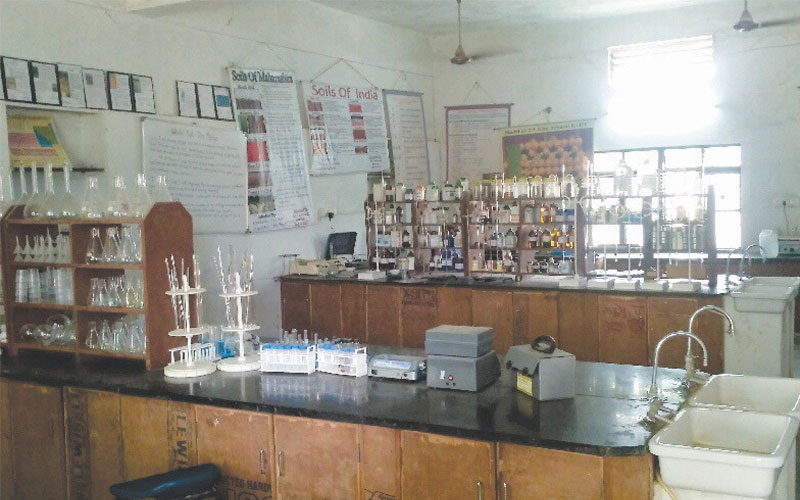Agricultural chemistry is the study of chemistry, especially organic chemistry and biochemistry, as they relate to agriculture—agricultural production, the processing of raw products into foods and beverages, and environmental monitoring and remediation. Agricultural chemistry is a science concerned with ways to influence chemical and biochemical processes in soil and plants, with plant mineral nutrition and with using fertilizers and other chemical means to improve fertility and increase yield.

It also addresses several other ways to increase yield, such as herbicides and stimulants for growth, and serves as the scientific basis for the introduction of chemical processes into agriculture. The college has well-furnished Soil Science and Agriculture chemistry lab for day to day experiments and research activities.
Agricultural chemistry is related to both chemical and biological sciences in its aims, processes, and research topics. It is also closely linked to soil science, forestry, meteorology, plant and biochemistry, agricultural microbiology, physics and chemistry. Agricultural soil science studies the chemical, physical, biological, and mineralogical composition of soils as they relate to agriculture. Agricultural soil scientists develop methods that will improve the use of soil and increase the production of food and fiber crops.
This laboratory is used for research in following areas:
List of Equipment in the lab:
| Sr no | Name of the Equipment |
| 1 | Water still distillation unit |
| 2 | EC meter |
| 3 | pH meter |
| 4 | Flame photometer |
| 5 | Digital Spectrometer |
| 6 | Hot air oven |
| 7 | Rotary Shaker |
| 8 | Hot plate |
| 9 | Water bath |
| 10 | Binocular microscope |
| 11 | Mridaparikshak Kit |
| 12 | Soil Testing Kit |
| 13 | Hot air oven |
| 14 | Visible spectrophotometer |
| 15 | Hydrometer |
| 16 | Digestion block |
| 17 | Infiltrometer |
| 18 | Nitrogen Analyser |
| 19 | Digital Weighing Balance (0.001gm) |
| 20 | Heating Mental |